Foraging Plantain Leaf & Uses
Learn how to identify and forage plantain, a common backyard weed, plus how to harvest, dry, and use it!

The herbal weed we know as plantain belongs to the family Plantago – of which there are about 275 species worldwide.
Some of the plantagos most commonly seen here in the United States are non-native, introduced from Europe and Asia, however, we have native kinds too!
Some of the plantains you’re likely to see include:
- Broadleaf Plantain (Plantago major) – not native, also called Common Plantain
- Narrow Leaf Plantain (Plantago lanceolata) – not native, also called Ribwort Plantain
- Rugel’s Plantain (Plantago rugelii) – native to US, also called Black-Seeded Plantain, resembles broadleaf plantain, but has purplish stems (see photos & more info at the Native Plant Trust site and Minnesota Wildflowers)
- Pale-Seeded or Hoary Plantain (Plantago virginica) – native to US, narrow leaves that are hairy (see photos & more info at the Native Plant Trust site entry.)

Differences between Plantain Weed and Plantain Fruit
Before we go further with this article though, let’s make sure we’re talking about the same plant!
Plantain the leafy weed is not the same as plantain the fruit that looks like a banana. Here’s an article we wrote about the differences between those two.
Plantain (herb) vs. Plantain (fruit) – The Differences
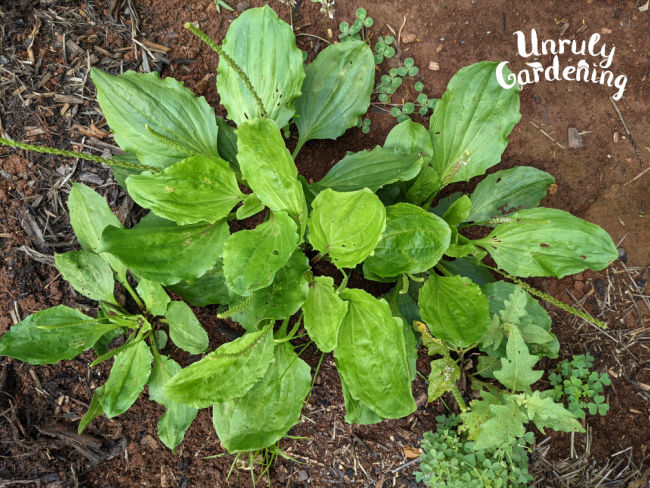
Identifying Plantain
Some plantagos, such as broadleaf and narrow leaf plantain, are naturalized non-native plants. They were originally brought over from Europe and Asia by early American colonists. However, we also have a couple of native plantago species from here in the US.
Using something like the Picture This Plant Identification App on your phone, is helpful to make sure you’re looking at a plantain plant, but don’t use that as a sole identifier.
Are you a nervous forager?
If you’re nervous about foraging (and that’s perfectly normal – we used to feel the same!), try growing your own plantain first. Strictly Medicinal has a variety of species of plantain available – pick a small spot in your garden or even a spare planting container, and grow a few plants so you can see firsthand what plantago looks like in its full life cycle.
You can also buy dried, organic plantain leaves from Mountain Rose Herbs to make natural plantain remedies with.

Leaves
When young and tender, you can eat the leaves in salads or soups or juices, but older leaves are quite tough and too fibrous to enjoy. We personally don’t enjoy eating the leaves at any stage, but some foragers appear to, so after you’ve positively ID’d your plantain, try a nibble and see what you think!
Plantain grows as a rosette from the ground, with the leaves all coming out of the same central spot. The leaves of broadleaf plantain are broadly oval shaped, while the leaves of narrow leaf plantain are thin and lance-like. Both types have 5 to 7 long parallel veins running right down them. The lines in each leaf run from tip to base and are prominent and easy to see.

Seeds & Flower Heads
Plantains have a long, tall stem with a flower and seed head. Some of you may relate – we have fond memories of using the mature browned seedheads of ribwort (narrowleaf plantain) as kids by making a loose knot or a bend in the tough stem and then quickly pulling it tight to “pop!” off the seedhead in the direction of siblings or friends!
Narrow leafed (lance-leafed, Plantago lanceolata) plantain has shorter seed heads, while broadleaf (Plantago major) has longer flower stalks and seed heads.
Note that plantain has leafless flower stalks – so you won’t see any leaves growing out of the seed or flower spike.
A side note: The dietary supplement psyllium comes from a plantago – Plantago ovata!

Where to Find
Forage plantain from lawns, garden beds, parks, and areas where the land has been disturbed. You’ll sometimes even see a hardy specimen growing from sidewalk or asphalt cracks.
Whether you live in the city or country, you can likely find a plantain plant flourishing somewhere nearby!
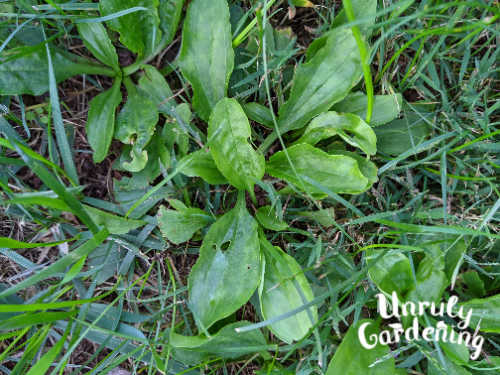
When & How to Harvest
Depending on where you live, most plantain plants appear between early spring to late fall. In some climates though, you may spot them year ’round. Plantain is a perennial herb, so if the leaves go away in winter, don’t worry – they’ll be back when it starts warming up again!
You can either use a pair of scissors or your fingers to snip or snap off leaves. If you’re using for herbal purposes, the leaves can be any size. If you want to try nibbling on one to taste test, choose a very small, young leaf.
Make sure to collect clean leaves on a dry day. That way you won’t have to worry about washing sand or dirt from the leaves, or excess moisture to make drying more difficult.
If you must rinse the leaves, try using a salad spinner to get as much moisture off of them as possible, then gently blot dry on a towel.

How to Dry Plantain Leaf
It’s easy as can be to dry plantain leaves! We usually just spread them out in a single layer on a drying screen, paper towel, or dish towel to air dry for several days.
You can also use a dehydrator set to low (around 90 degrees F). Start checking every hour or so, after several hours of dry time, since it will vary depending on your type of plantain, size of the leaves, and existing moisture in them.
Possible Lookalikes
Plantain is pretty distinctive in its look, but there are a couple of other green leaves whose veins run parallel too. Just remember that plantain’s veins are very distinctive, and especially easy to see and feel when you flip a leaf over.
Young hosta leaves may cause confusion when foraging plantain, but those leaf veins are more plentiful and curvy. (Remember plantain usually has 5 veins, or up to 7.)
Here are two plants that we think could vaguely resemble narrower leafed plantain if you’re brand new to foraging.

Showy Orchis (Galearis spectabilis)
These shy native woodland orchids have veins that run down the length of each leaf. However, the veins aren’t prominent, and there are only a couple of leaves, rather than a rosette.
When they’re in bloom it’s very clear they’re two different plants! Also note that showy orchis thrives in shady, rich woodlands, whereas plantain loves sunny fields and yards.

Lily of the Valley (Convallaria majalis, C. pseudomajalis)
Another plant whose veins run up and down the leaf is Lily of the Valley. Once again however, you’ll note only a couple of leaves on this plant, rather than an entire rosette, and the veins aren’t prominently noticeable when you flip over a leaf.
Lily of the Valley is ultra toxic and can grow in the wild, so it’s always good to be aware of this plant! Normally, the flowers are white, but this is a pink variation that voluntarily sprung up under an old oak tree several years back.
How to Use Plantain
While some foragers enjoy eating young plantain leaves, they’re more often used to make herbal medicine. Used on your skin externally, plantain makes a great first aid herb for irritated, infected, or itchy skin, and insect bites.

First Aid Plantain Leaf Poultice
Plantain excels at first aid field medicine. If you’re out and about enjoying nature and encounter bee stings, scrapes, thorns, minor cuts, mosquito bites, etc, look around for a plantain leaf.
You can either chew it up into a pulp, making a spit poultice, or just crush and rub the leaf between your fingers to bruise it. If you’re at home, use a mortar and pestle if you have one available.
Apply the mashed or crushed leaf to the offending spot. If possible, use a piece of gauze or tape to hold it in place.
The green poultice will soothe irritation, while helping to “draw out” anything still causing problems – like a stinger, thorn, etc. Leave it on your skin for several hours if possible, before rinsing off.
Plantain Salve
One of the easiest and most useful thing to do with plantain is turning it into an herbal first aid salve.
It’s not only helpful for humans, but safe to use on pets and farm animals as well!
Uses for plantain salve include:
- chapped skin or lips
- minor scrapes and cuts
- hot spots on animals
- eczema or flaky, dry skin patches
- mosquito, chigger, and other bug bites

Recipe for Plantain Salve
Here’s a simple homemade first aid salve using common ingredients and plantain from your backyard! Olive oil is commonly used, but it can feel heavy or greasy on your skin. For a lighter feeling salve, try sweet almond, apricot kernel, or rice bran oil. Sunflower oil is also nice, especially for ultra sensitive skin. To make your salve have a greener color, add a small amount of unrefined tamanu oil to the infused oil. (Using store-bought oils is perfectly fine to do, as long as they are fresh.)
Part 1: Make an Infused Oil
Crumble up the dried leaves and fill a half pint or pint canning jar halfway with the dried crumbled leaves. Fill the jar with oil almost to the top, leaving a little room for expansion, and stir to combine. Put a lid on the jar, label it, and tuck it away for about 4 to 6 weeks to infuse into the oil, shaking the jar occasionally as you remember to.
Alternatively, if you’re in a hurry, leave the jar uncovered and place it into a small saucepan containing a few inches of water (to create a makeshift double boiler). Heat the pan over medium-low heat for 2 to 3 hours, keeping a close eye so the water doesn’t evaporate out.
After the oil is infused, strain and use in the salve recipe. Unused infused oil keeps about 1 year in a cool, dry, dark spot.
Part 2: Make the Salve
Combine 3.5 ounces (100 ml) infused oil with 1/2 ounce (14 g) of grated or pastille-style beeswax in a heatproof jar or empty tin can. (For a softer salve, add an extra 0.5 ounces of oil.)
Place the container in a small saucepan filled with a few inches of water and set the pan over medium heat to melt. Once the wax is fully melted, remove from heat and pour into tins. If you’d like, you can add 3 or 4 drops of lavender essential oil before pouring, though not if you’re using on pets. Shelf life is about 1 year, or as long as the salve smells good.

More Plantain Uses!
For more uses including a tincture for acne spots, plantain lotion, infused vinegar, and more, visit this article at The Nerdy Farm Wife:
10 Things to Make with Plantain Leaves
References and Further Reading
Electronic Physician, Plantago major in Traditional Persian Medicine and modern phytotherapy: a narrative review; 2018 Feb; 10(2): 6390–6399.
Hong Kong Pharmaceutical Journal, Volume 22, Number 1, January to March 2015. Pages 29 – 34. ISSN 1727-2874.
Our articles are for information and idea-sharing only. While we aim for 100% accuracy, it is solely up to the reader to provide proper identification. Be sure to seek out local foraging classes and plant walks, and invest in foraging guides suitable for the area you live in, since some wild foods may have adverse effect.

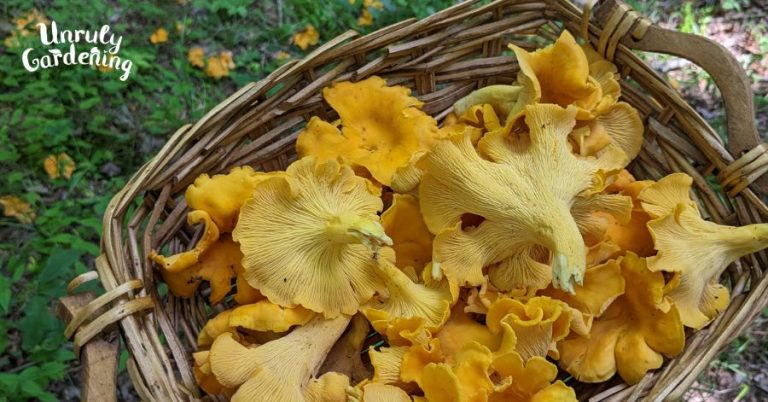
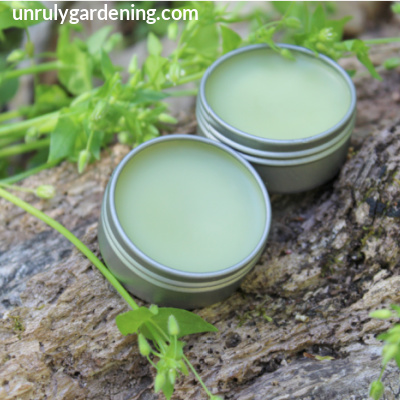
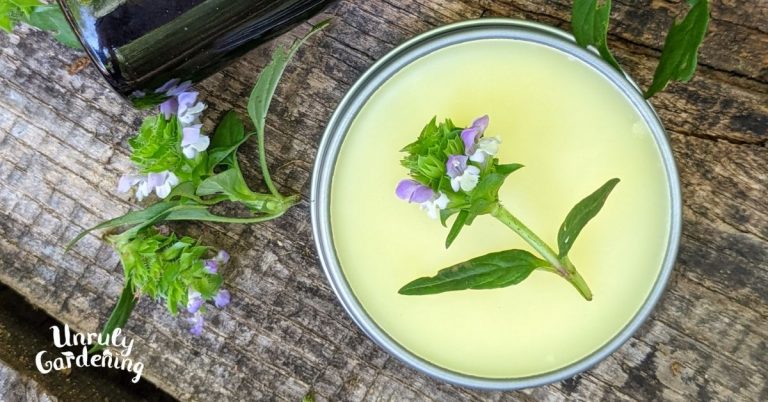
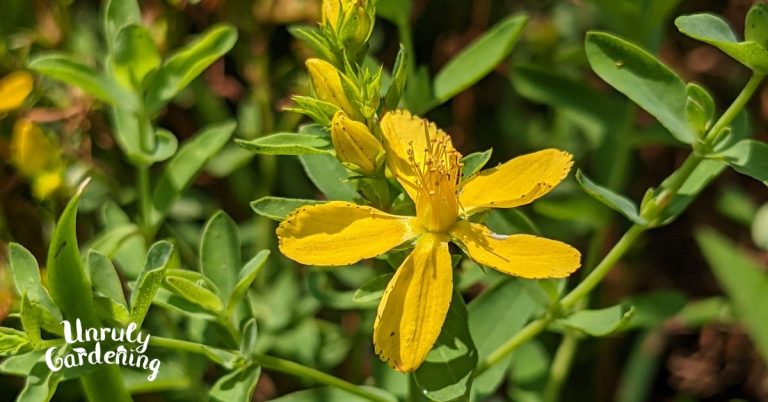
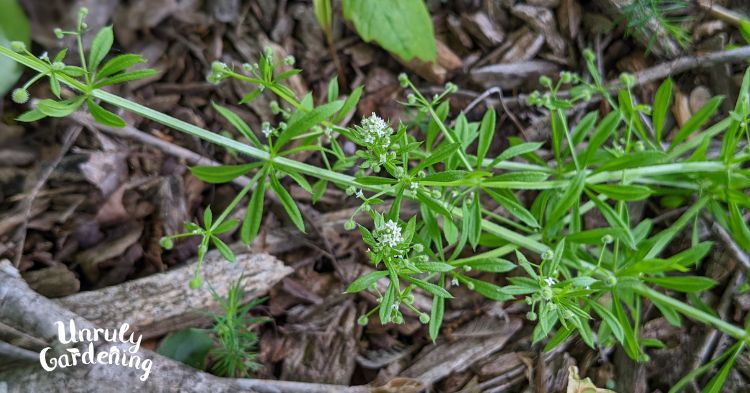
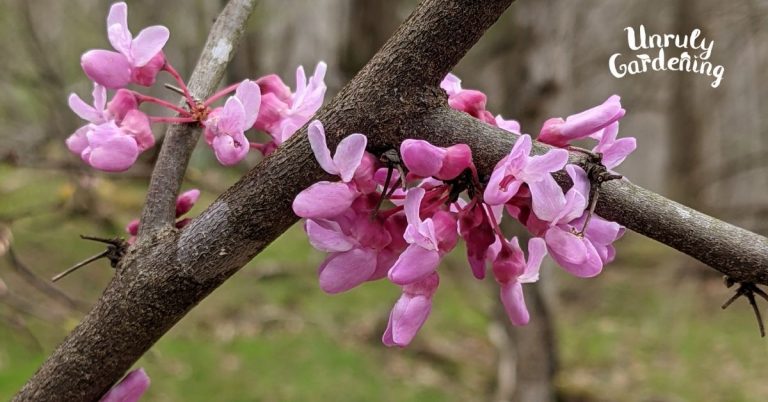
I have a sensitivity to beeswax; can I sub candelilla wax?
Hi Deb! Yes, you sure can. When substituting candelilla wax, I use about half as much as beeswax.
So if a recipe calls for 1 ounce beeswax, try 1/2 ounce candelilla wax instead.
If your salve, lip balm, etc turns out too soft, you can always remelt and add more wax, or if it’s too hard, you can remelt and add more oil.
i’ve been harvesting plantain leaves since i was about five years old, when my mother first taught them to me. However, didn’t learn the English word for them till i was maybe in my early 30’s LOL. How i keep them however, is totally different, and not so much work. I wash them, pat to dry, place them on a paper towel, layer another paper towel, layer more leaves, and so on, and so on. Then place into a ziploc, or flat container, and stick into the freezer. Then, whenever i need it’s use, i just take however much i need, and the coolness, helps alleviate even more irritability, and just place is straight on the skin.
Hi Dana, Thanks for sharing how you keep plantain in the freezer!
I have often frozen fresh herbal flowers to use later, but it didn’t occur to me to freeze plantain leaves.
Sounds like a genius idea – thank you so much for sharing with us! 🙂